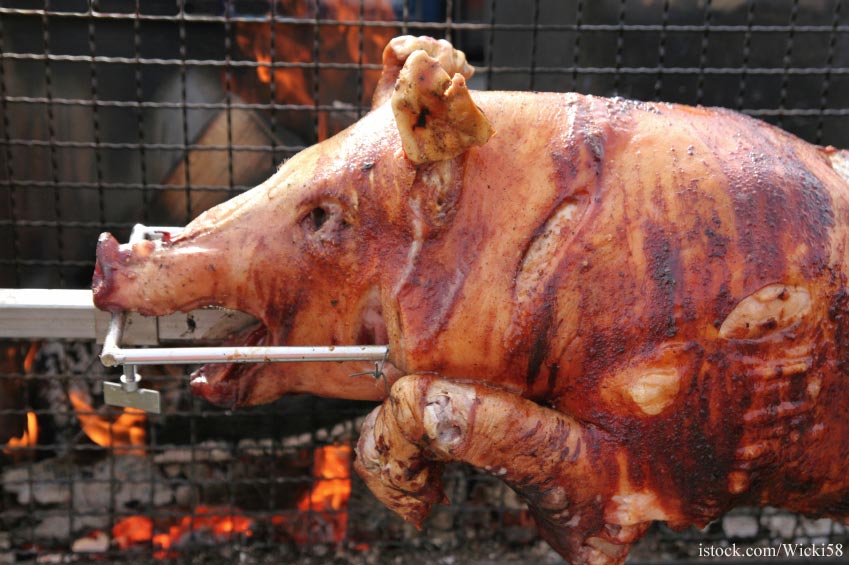If you want to roast a whole pig this holiday season, FoodSafety.gov has tips to make sure that the pork is cooked properly and is safe to eat. There was one large food poisoning outbreak this year linked to whole roasted pork that was produced by Kapowsin Foods.

Those pigs were linked to a Salmonella outbreak last year and this year. In 20156, 192 people in five states were sickened with an antibiotic resistance strain of Salmonella I 4,[5],12:i:-. Thirty of those patients were hospitalized. This year, three people were sickened with Salmonella infections after eating whole roast pig at the Good Vibe Tribe Luau in Seattle. The pigs were produced by Kapowsin Meats of Graham, Washington.
Whole pigs can be difficult to roast correctly, whether they are grilled, cooked in a rotisserie, or roasted in a rock lined pit. You may want to hire a professional to cook the pig, or break the animal down into individual cuts before cooking.
When you order a whole pig, buy it from a reputable supplier and order in advance. You’ll need about 1-1/2 pounds of pre-cooked weight per person. Remember that it’s not safe to roast a frozen pig. Ask the vendor to thaw the pig for you under refrigerated conditions before you pick it up. Order the pig at least seven days in advance.
The pig should be wrapped in food grade plastic or a large food grade plastic bag to avoid cross-contamination. Pick up the pig just before you are ready to cook it. This animal is too large for the refrigerator, and keeping it in a cooler is problematic. You can keep it in a food grade plastic lined-bathtub full of ice, but make sure it’s kept at 40°F or lower. Use an appliance thermometer in the pig to monitor the temperature constantly. Disinfect your tub after the pig is removed.
Make sure you have two food thermometers on hand, a clean table for preparation and carving, clean utensils and serving dishes, paper towels and disinfectant wipes, an apron, disposable gloves, and access to warm running water an soap.
Always use clean utensils to remove and carve the pig, and not the dirty utensils you used during the cooking process. The station where the pig is prepared and carved must be kept clean. Any utensil or surface that comes into contact with the pig must be sanitized.
If you want to stuff the pig, keep the stuffing to a minimum to reduce the risk of bacterial growth. A large pig takes a long time to heat up to a safe temperature, and the stuffing in the middle heats up last. The stuffing may be in the danger zone of 40°F to 140°F too long, which allows bacteria to grow.
Follow cooking instructions carefully. A whole pig can take 4 to 12 hours to cooking through, longer if it’s stuffed. Check the temperature in the deepest part of each shoulder and each leg, several places in the loin, and in the stuffing. The meat should be cooked to at least 195°F.
Any pork that is not eaten should be refrigerated within two hours, or one hour if the air temperature is 90°F or higher. Pack leftovers in shallow containers. Freeze for 4 to 12 months, or refrigerate up to three days.




